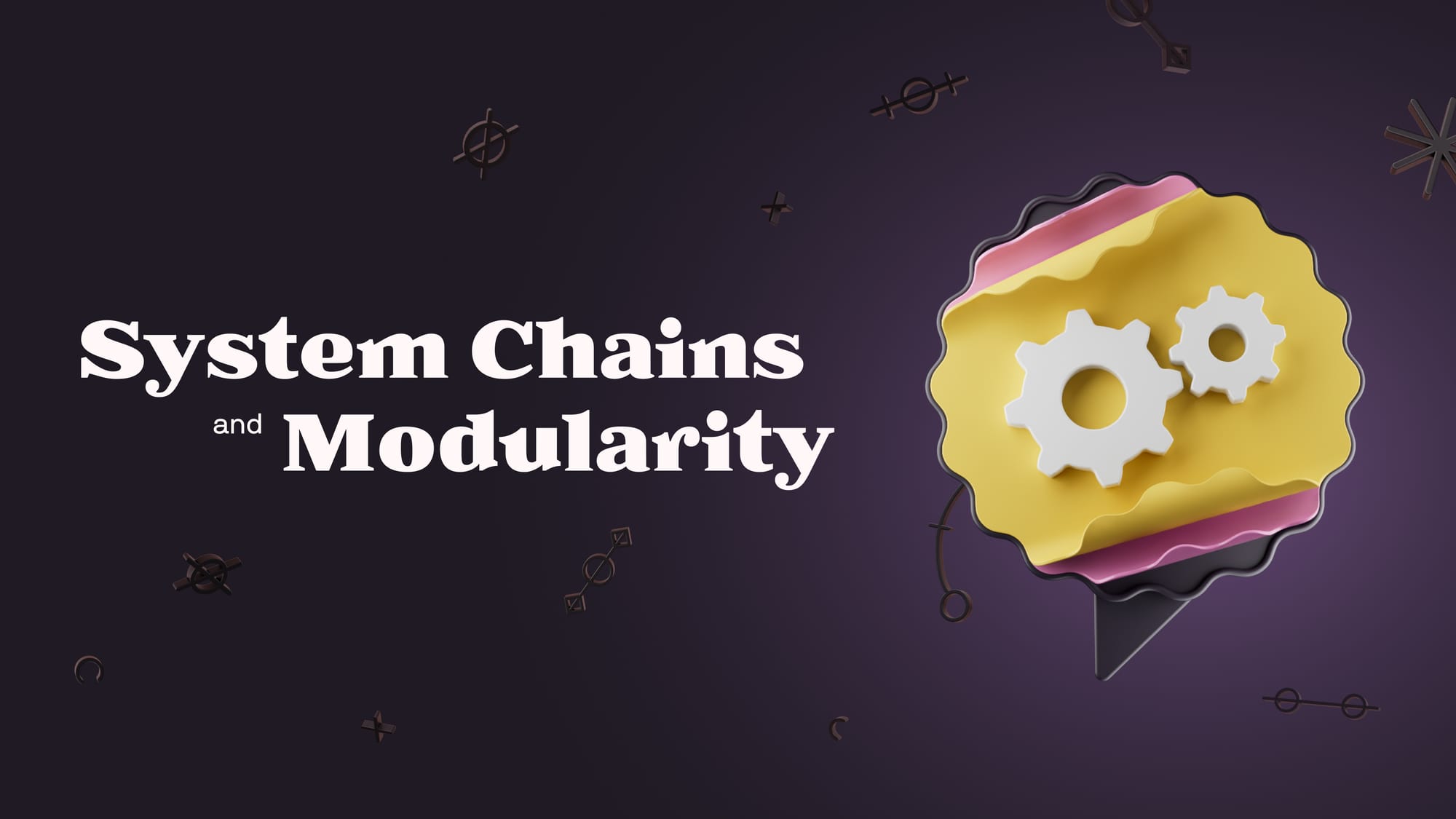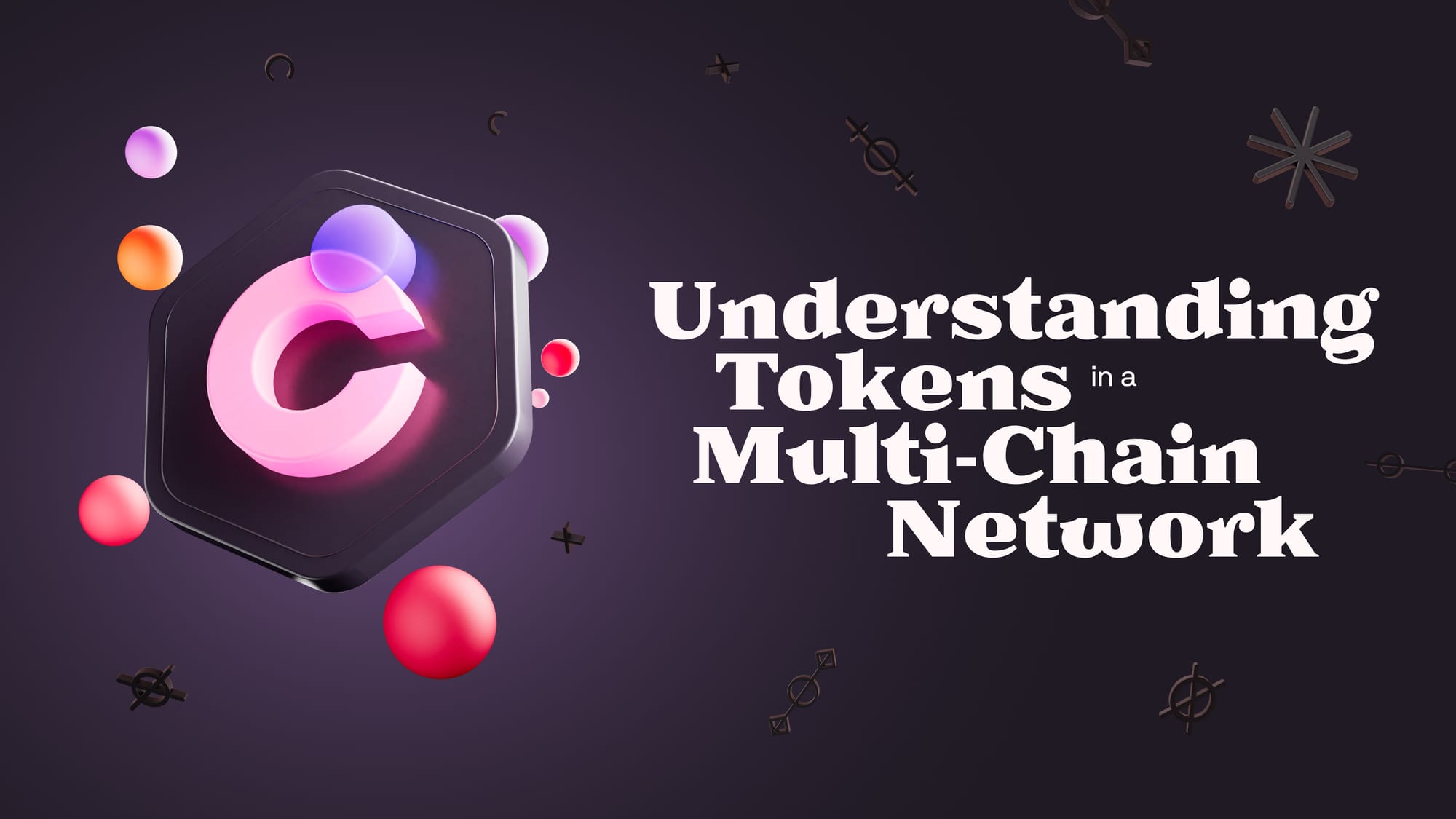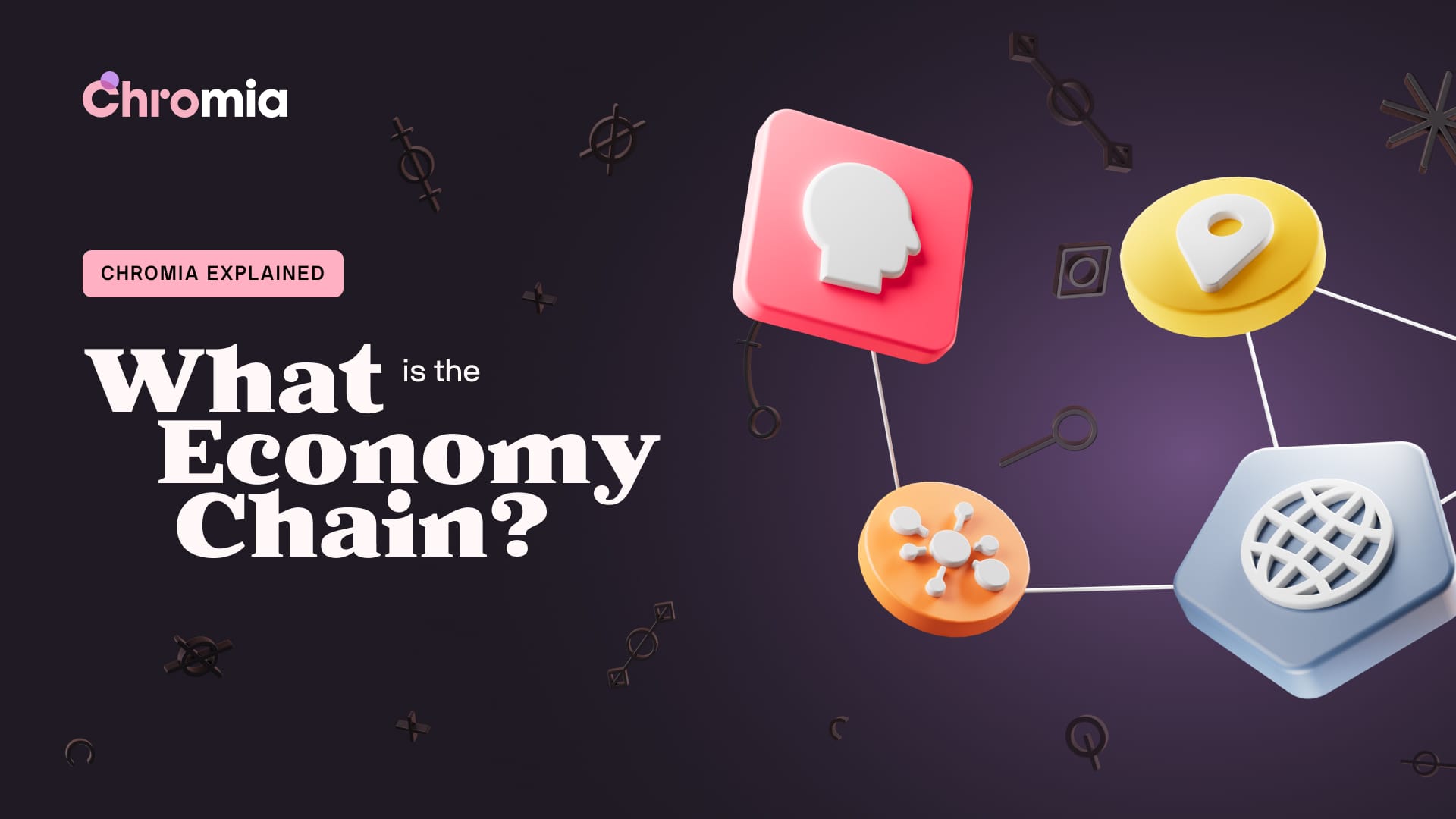In January’s monthly update, we introduced the upcoming Economy Chain as a key part of our network’s design and an important step towards implementing Native CHR and the native fee system. Let’s take a closer look:

System Chains and Modularity
Chromia’s network is made up of specialized system chains and dedicated dapp chains. This modular framework has a number of advantages, including:
- Each system chain can be optimized for a specific role.
- Each dapp chain can be customized based on its individual needs.
- Distributing network traffic across several chains prevents congestion, improving scalability and responsiveness.
- Dapps and system components can be updated individually.
Short Description of Each System Chain
Directory Chain - Stores a list of providers and nodes, as well as the configuration of each blockchain on the network.
Cluster Anchoring Chains - Stores information about the blocks generated by each dapp within a cluster.
System Anchoring Chain - Serves as a repository for anchoring blocks from all of the cluster anchoring chains, to aid in the detection and resolution of consensus disputes.
Economy Chain - Hosts the native fees dapp, acts as the root chain of CHR tokens on the Chromia Network, and serves as the target chain for the official CHR/EVM bridge.

Understanding Tokens in a Multi-Chain Network
Before we specifically discuss the Economy Chain, it is worth exploring token management on a multi-chain network.
In many situations, it makes sense for a dapp chain to act as the ‘root chain’ for a specific asset. For example, if you are building a blockchain game, it's a good idea for your native token and game-specific items to live on your blockchain.
There are also scenarios where it makes sense for a specific asset to travel from one chain to another. For example, if two game projects collaborate to create an NFT that can be used in either game, a user may want to send the NFT back and forth between game X and game Y’s chain.
However, things get trickier when there are assets that people want to use across several dapps (i.e., CHR or USDT). If users are required to bridge these assets to every dapp’s chain, they will end up holding balances of the asset in several locations. The resulting ‘network sprawl’ makes it more difficult to track assets and can even introduce potential security concerns.
Introducing the Economy Chain
By establishing the Economy Chain as the root chain for CHR it simplifies interactions from both a dapp and user perspective. Since these tokens will be bridgeable 1:1 for the EVM equivalent via the official bridge, all network participants know that these tokens have value.
If a project is selling an NFT for 100 CHR tokens, a user can make the payment on the Economy Chain and submit proof of this payment to the dapp, which will then dispense the NFT on its own chain. This prevents users from needing to hold CHR in multiple locations, reducing network sprawl.
As the Chromia team adds official bridge support for other major assets (i.e., USDT, USDC, etc.), the same concept can be applied elsewhere - for example, there could be a ‘Stablecoin Chain.’ The end result is that users and dapps have a small number of dedicated chains that simplify asset management.
Native Fees
The Economy Chain is also being used to host the Native Fees dapp, which processes CHR payments in exchange for container leases and distributes them to network providers. This setup is ideal because the Economy Chain is the root chain for native CHR. This keeps the entire process on one chain for simplicity and efficiency.
When Will We See it in Action?
The first instance of the Economy Chain will be implemented on the public testnet, and the official bridge supporting CHR will be connected to it. This will allow users to bridge tCHR from Ethereum and Binance Chain to Chromia’s testnet and utilize them in Native Fees and other dapps.
Development is moving quickly as we continue on the ‘Road to Mainnet.’ As always, follow our official channels for the latest updates.
About Chromia
Modern society runs on data and every online service you’re using is built upon underlying databases - ranging from your online bank to music streaming and gaming. Chromia is a relational blockchain - a combination of a relational database and a blockchain - making it easy to develop user-friendly decentralized apps for almost any industry, including DeFi, NFTs, gaming, and more.
Website | Twitter | Telegram | Facebook | Instagram | Youtube | Discord
